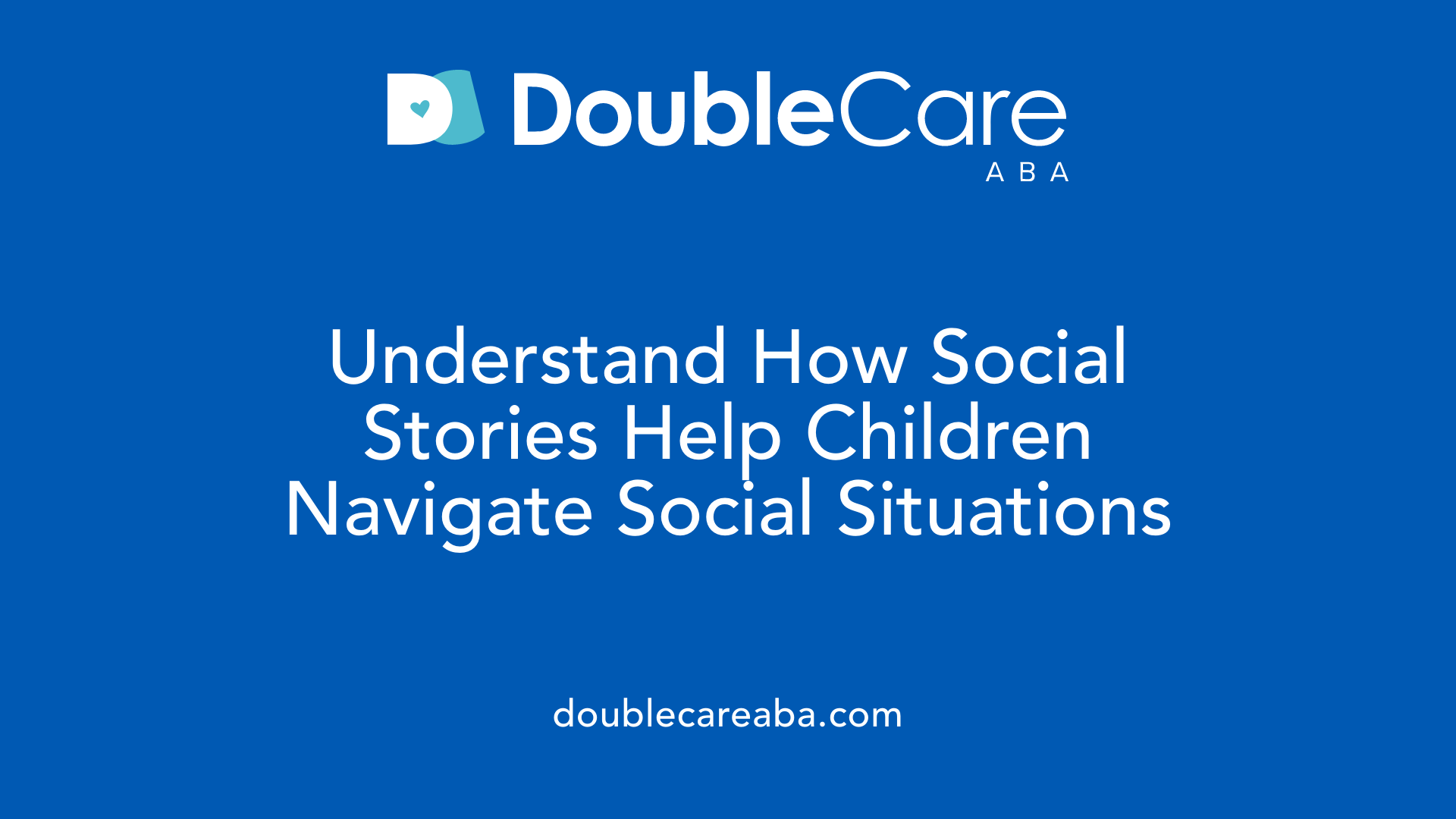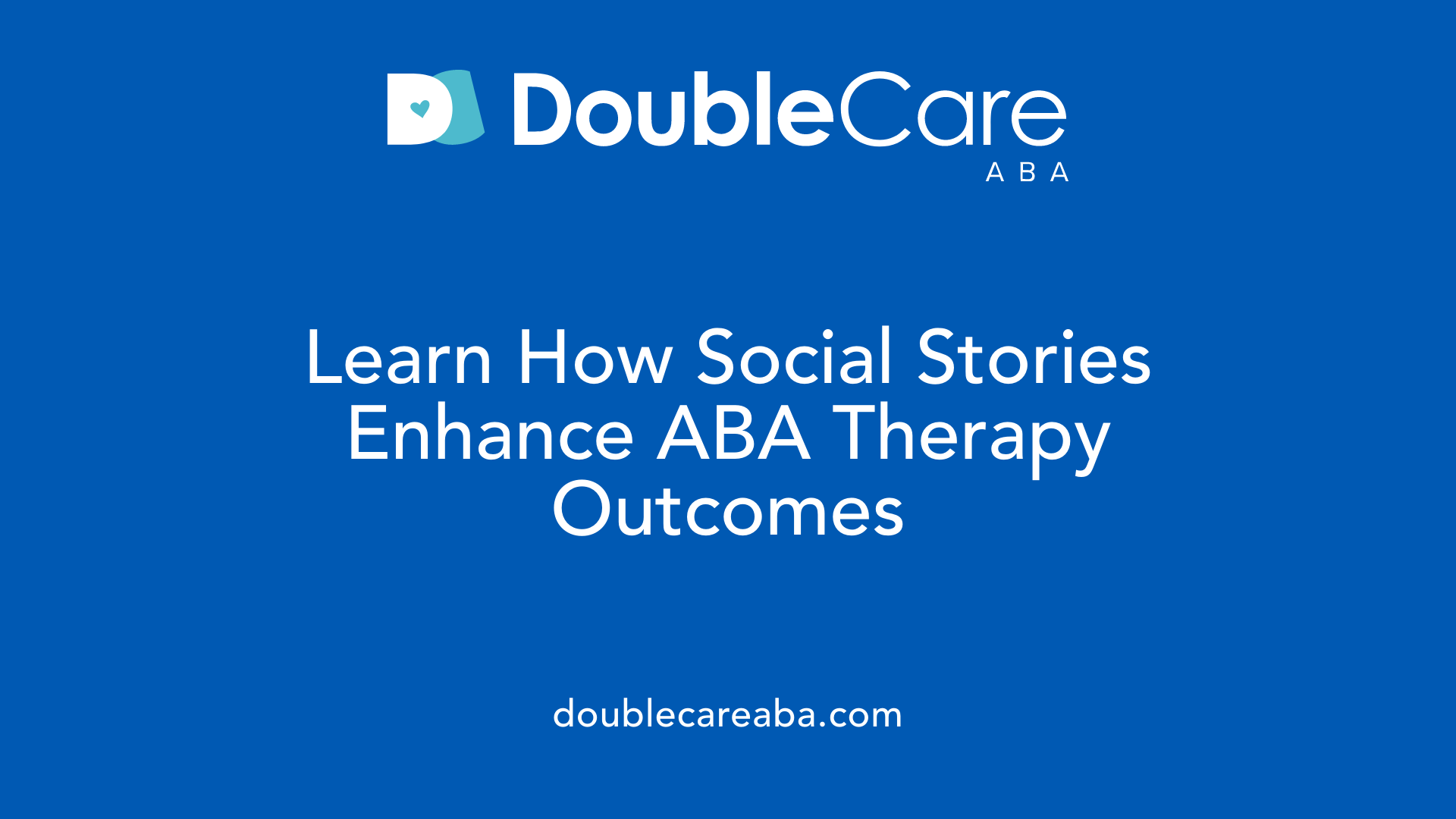Social Stories For Autism
Bridging Understanding and Behavior: The Role of Social Stories in Autism Therapy

Introducing Social Stories and Their Importance for Autistic Children
Social stories have become a crucial tool in helping children with autism navigate complex social situations by providing clear, descriptive narratives tailored to their unique needs. Developed by Carol Gray in 1991, these stories explain social cues and expected behaviors in everyday contexts, empowering children with autism to better understand and engage with their social world. This article explores social stories within the broader framework of evidence-based autism therapies, including Applied Behavior Analysis (ABA), highlighting how these approaches work together to improve social understanding, communication, and behavior in autistic individuals.
Understanding Social Stories: Origins and Core Components

What are social stories and who developed them?
Social stories are short, descriptive narratives designed to help children with autism understand various social situations. They aim to clarify social cues and guide appropriate responses, aiding children in navigating complex social environments. These stories were developed in 1991 by Carol Gray, a teacher who specialized in working with young autistic children.
How are social stories structured to support children with autism?
Social stories are carefully composed using four types of sentences that work together to explain social contexts and encourage positive behavior:
- Descriptive sentences: Provide factual details about the social situation.
- Perspective sentences: Offer insight into others’ thoughts, feelings, or motivations.
- Directive sentences: Give gentle instructions or suggestions on how to respond.
- Affirmative sentences: Reinforce positive outcomes and desired behaviors.
This structure helps autistic children understand nonverbal cues such as body language, facial expressions, gestures, and eye contact, which can otherwise be difficult to interpret.
Customization to individual needs
Each social story is tailored to meet the specific needs of an individual child. This personalization often involves collaboration with psychologists or speech pathologists to ensure the story addresses particular challenges and developmental goals. The customized approach increases the effectiveness of social stories by directly targeting the child's unique social learning requirements.
The Integration of Social Stories in ABA Therapy

How are social stories used in ABA therapy for autism?
Social stories are an important tool within ABA therapy, specially tailored to address a variety of social situations that autistic children often encounter. These include sharing toys, making eye contact, taking turns, and transitioning between activities. The stories are typically read to the child just before the social situation occurs, helping to prepare them and reduce anxiety linked with uncertainty or change.
Collaboration with professionals
The creation and implementation of social stories as part of ABA involve close collaboration between Board Certified Behavior Analysts (BCBAs), speech pathologists, and psychologists. These professionals work together to ensure that each story is customized to the child’s specific needs. This teamwork ensures the social stories align with the broader individualized treatment plan designed by the BCBA.
Examples of situations addressed
Social stories cover a broad range of everyday challenges faced by autistic children. Examples include narratives about grocery shopping, playing with friends, or coping with loud noises. Each story uses descriptive, perspective, directive, and affirmative sentences to provide context, explain perspectives, guide behavior, and reinforce positive actions.
Benefits of using social stories to enhance ABA outcomes
Incorporating social stories into ABA therapy has several benefits. They help reduce anxiety and stress by preparing children for unfamiliar situations. Social stories also improve social understanding and communication skills. Importantly, these stories support positive behavioral changes, contributing to the overall success of ABA therapy. This integration enhances the child’s ability to navigate social environments with greater confidence and skill.
Applied Behavior Analysis (ABA) Therapy: An Overview
What is Applied Behavior Analysis (ABA) therapy and how is it used to support individuals with autism?
ABA therapy is a scientific, evidence-based approach that applies learning and behavior principles to help individuals with autism develop functional, socially important skills.
Definition and scientific basis of ABA
ABA therapy is grounded in the study of behavior and how it is influenced by the environment. This approach uses systematic observation, measurement, and reinforcement to teach new skills and reduce challenging behaviors. Assessments by a Board Certified Behavior Analyst (BCBA) tailor individualized treatment plans to each child's needs.
Key techniques like positive reinforcement, DTT, and PRT
ABA employs techniques such as Positive Reinforcement, where desirable behaviors are followed by rewards, increasing their occurrence. Discrete Trial Training (DTT) breaks down skills into small, structured steps with repeated practice. Pivotal Response Training (PRT) incorporates play and natural settings to motivate the child and generalize skills.
Scope of ABA in developing communication, social and daily living skills
This therapy focuses broadly on enhancing communication, socialization, and daily living skills like dressing, eating, and hygiene. ABA helps reduce problem behaviors such as aggression by identifying triggers and teaching alternative responses. It supports social skills development including eye contact, turn-taking, and conversation initiation. Sensory sensitivities are addressed through integration strategies, improving comfort and processing.
Ethical considerations and focus on dignity
ABA emphasizes ethical practices such as informed consent, least restrictive interventions, and maintaining the dignity of the child throughout therapy. Parents are involved through training, ensuring consistency across home and therapy environments.
Through its personalized, structured, and positive approach, ABA helps individuals with autism build essential life skills, fostering independence and improving overall quality of life.
Professionals Behind ABA Therapy: Roles and Qualifications
Who typically provides ABA therapy for autism, and what qualifications do they have?
ABA therapy is delivered by a highly trained team that includes Board Certified Behavior Analysts (BCBAs), Board Certified Assistant Behavior Analysts (BCaBAs), and Registered Behavior Technicians (RBTs).
Board Certified Behavior Analysts (BCBAs) are the lead professionals who design and oversee individualized treatment plans. They conduct detailed assessments and ensure the therapy targets the specific needs of each child based on the principles of behavior analysis.
Board Certified Assistant Behavior Analysts (BCaBAs) support BCBAs by helping supervise therapy and sometimes managing parts of the treatment plans under BCBA guidance.
Registered Behavior Technicians (RBTs) work directly with children to implement intervention strategies developed by BCBAs and BCaBAs. They are trained in applying techniques like positive reinforcement, within the A-B-C (Antecedent-Behavior-Consequence) behavioral framework.
Training and Certification Requirements
These professionals require specialized training and certification. BCBAs must complete graduate-level coursework in behavior analysis, pass a certification exam, and maintain ongoing education. BCaBAs and RBTs have distinct certification processes involving training hours and competency evaluations.
Collaboration with Caregivers and Families
A critical component of ABA therapy is teamwork. Professionals collaborate closely with caregivers and families to ensure strategies are reinforced consistently at home and other environments, promoting the child’s progress and skill generalization.
Supervision and Team Approach
ABA therapy incorporates a structured supervision model where BCBAs provide oversight to BCaBAs and RBTs, ensuring treatment integrity. This team approach helps adapt interventions based on data and the child's evolving needs, optimizing outcomes through coordinated efforts.
Developing Customized ABA Therapy Plans for Autism

How is a customized ABA therapy plan developed for a person with autism?
Creating an effective ABA therapy plan begins with a comprehensive assessment conducted by a Board Certified Behavior Analyst (BCBA). This evaluation identifies an individual's unique strengths, needs, and specific behavioral patterns. It serves as the foundation to set tailored goals focused on areas like communication, social skills, and daily living tasks.
What intervention strategies are used in ABA therapy?
Intervention strategies in ABA include evidence-based approaches such as Discrete Trial Training (DTT), which involves structured, repetitive teaching sessions, and naturalistic techniques like Natural Environment Training (NET) that encourage learning in real-life settings. Social skills training plays a critical role, often incorporating tools like social stories to help children understand social cues and manage challenging situations. Positive reinforcement is central to all techniques, promoting desirable behaviors and skill acquisition.
How is data collection and progress monitoring incorporated?
Data collection is an ongoing process where therapists track behaviors by recording their frequency, duration, and intensity. This careful monitoring allows for precise measurement of progress toward goals and informs timely adjustments to intervention strategies, ensuring the therapy remains responsive and effective.
What is the role of family involvement and generalization of skills?
Families and caregivers are actively involved through training that equips them to reinforce ABA techniques at home. This collaboration helps generalize skills across environments, making learned behaviors applicable in daily life situations. By working closely with families, therapists enhance the child's development and promote consistency, leading to better long-term outcomes.
Effectiveness and Benefits of ABA and Social Stories for Autism
What evidence supports the effectiveness of ABA therapy for autism?
Extensive research supports the effectiveness of Applied Behavior Analysis (ABA) therapy for children with autism. Meta-analyses based on multiple randomized controlled trials demonstrate that ABA can significantly improve communication, social skills, and adaptive behaviors. Structured interventions, like Discrete Trial Training (DTT) and Pivotal Response Training (PRT), use positive reinforcement to foster meaningful gains in social interaction and emotional regulation. ABA also decreases problematic behaviors such as aggression and self-injury by identifying triggers and promoting alternative actions.
Behavioral improvements and skill development
ABA therapy helps children with autism develop key skills including eye contact, turn-taking, initiating conversations, and daily living activities such as dressing and hygiene. Therapeutic strategies break complex tasks into manageable steps paired with positive reinforcement, encouraging independence. Sensory sensitivities and co-occurring conditions like anxiety are also addressed through tailored sensory integration techniques. Parents actively participate through training, ensuring consistency across home and therapy settings.
Role of social stories in reducing anxiety and enhancing communication
Social stories, developed by Carol Gray in 1991, are short, personalized narratives that explain social situations to autistic children. They provide clarity about social cues such as body language and facial expressions, helping children anticipate and manage upcoming events. Using descriptive, perspective, directive, and affirmative sentences, social stories reduce anxiety and enhance communication. When integrated into ABA therapy, they effectively prepare children for challenges like sharing, transitions, or coping with loud noises.
Challenges of therapy and ethical considerations
While ABA therapy offers measurable benefits, it requires significant time and commitment. Ethical practice is paramount and involves informed consent, least restrictive interventions, and respect for the child’s dignity. Ensuring individualized treatment plans and regularly collecting data to monitor progress helps tailor therapy to each child's needs. Collaboration between therapists, parents, and educators supports a holistic approach to the child's development.
| Aspect | Benefits | Considerations |
|---|---|---|
| ABA Therapy | Communication, social skills, behavior reduction | Time-intensive, requires skilled professionals |
| Social Stories | Anxiety reduction, social understanding | Must be individualized, requires regular reinforcement |
| Parent Involvement | Consistency, home support | Requires training and engagement |
| Ethical Practices | Child dignity, informed consent | Needs careful oversight |
The Impact of Social Stories and ABA on Autism Support
Social stories, pioneered by Carol Gray, serve as an effective, accessible tool that helps children with autism comprehend and navigate the complexities of social interactions. When integrated within the scientifically grounded framework of ABA therapy, these stories enhance social understanding, reduce anxiety, and reinforce positive behaviors. The collaborative work of skilled professionals alongside families ensures that interventions are customized, ethical, and holistic. Evidence underscores that early, intensive, and personalized approaches combining social stories with ABA techniques dramatically improve social skills, communication, and overall quality of life for individuals with autism. As awareness grows, continuing to expand access and refining these methods holds promise for enriching developmental outcomes and empowering autistic individuals to thrive in their social environments.
References
- Social stories and autism
- Understanding ABA ASD: Key Benefits for Autism Treatment
- How Social Stories Can Help in ABA Therapy | Childwise
- Applied Behavior Analysis (ABA)
- Understanding Your Child's ABA Therapy Providers
- The effectiveness of applied behavior analysis program ...
- Efficacy of Interventions Based on Applied Behavior ...
















